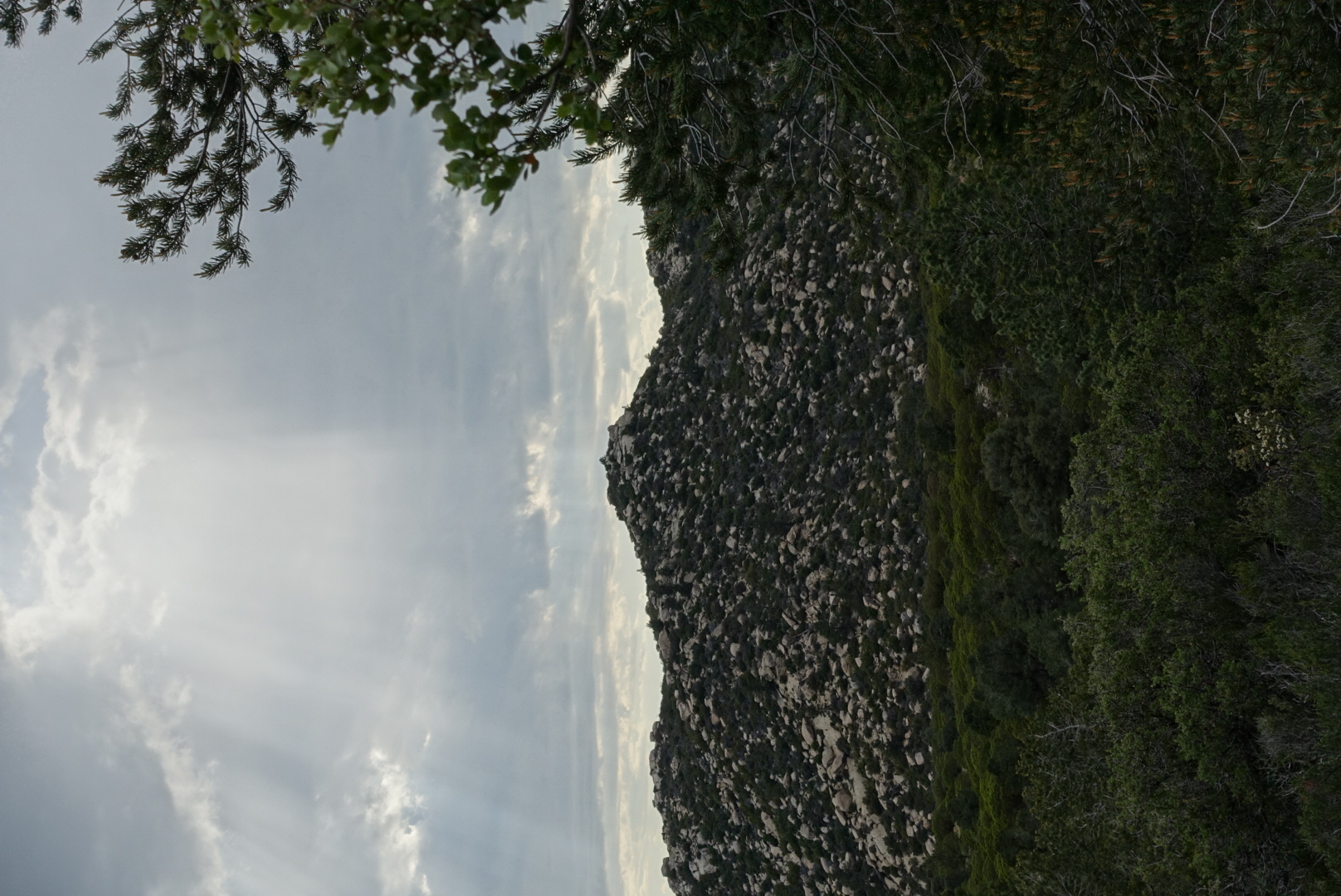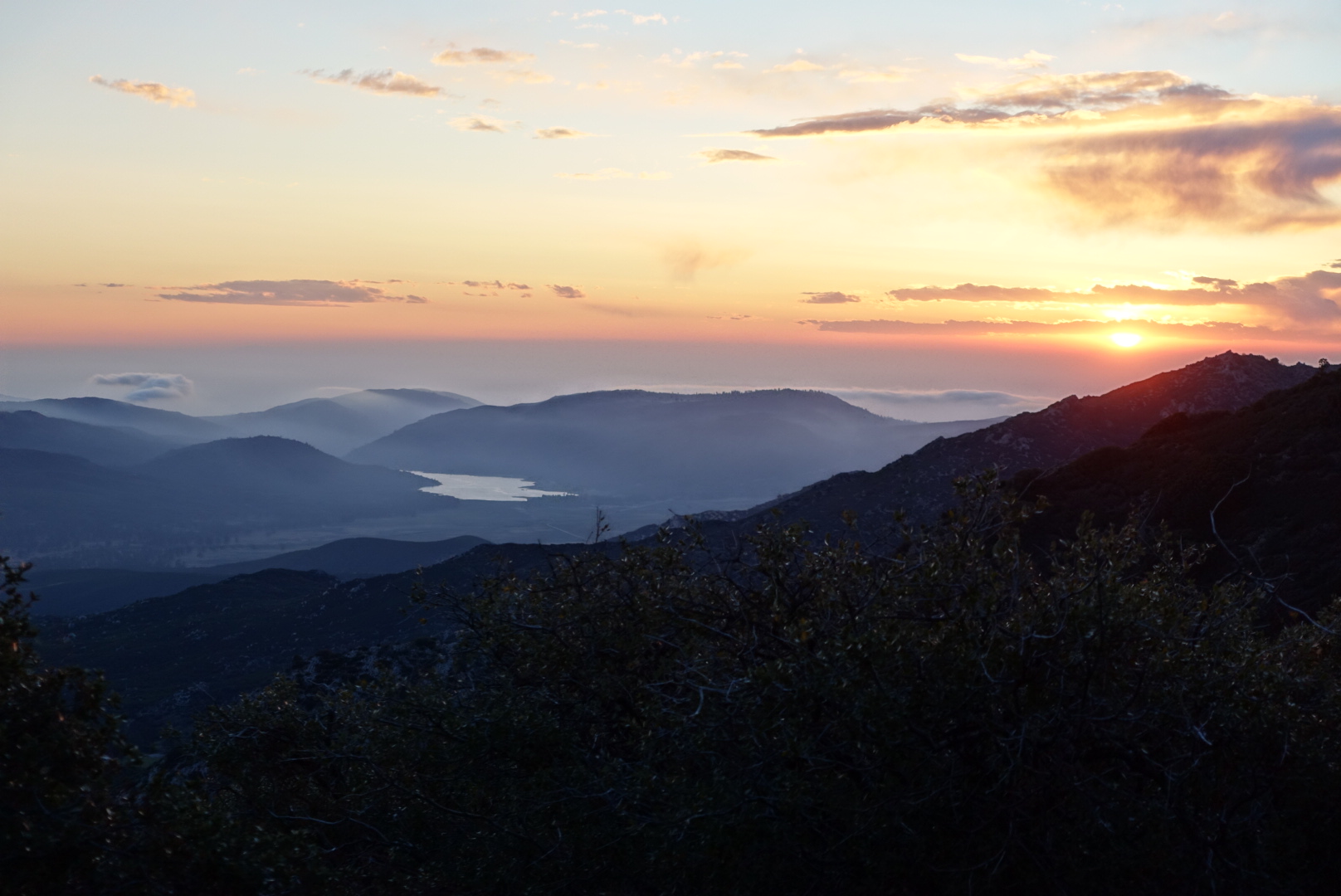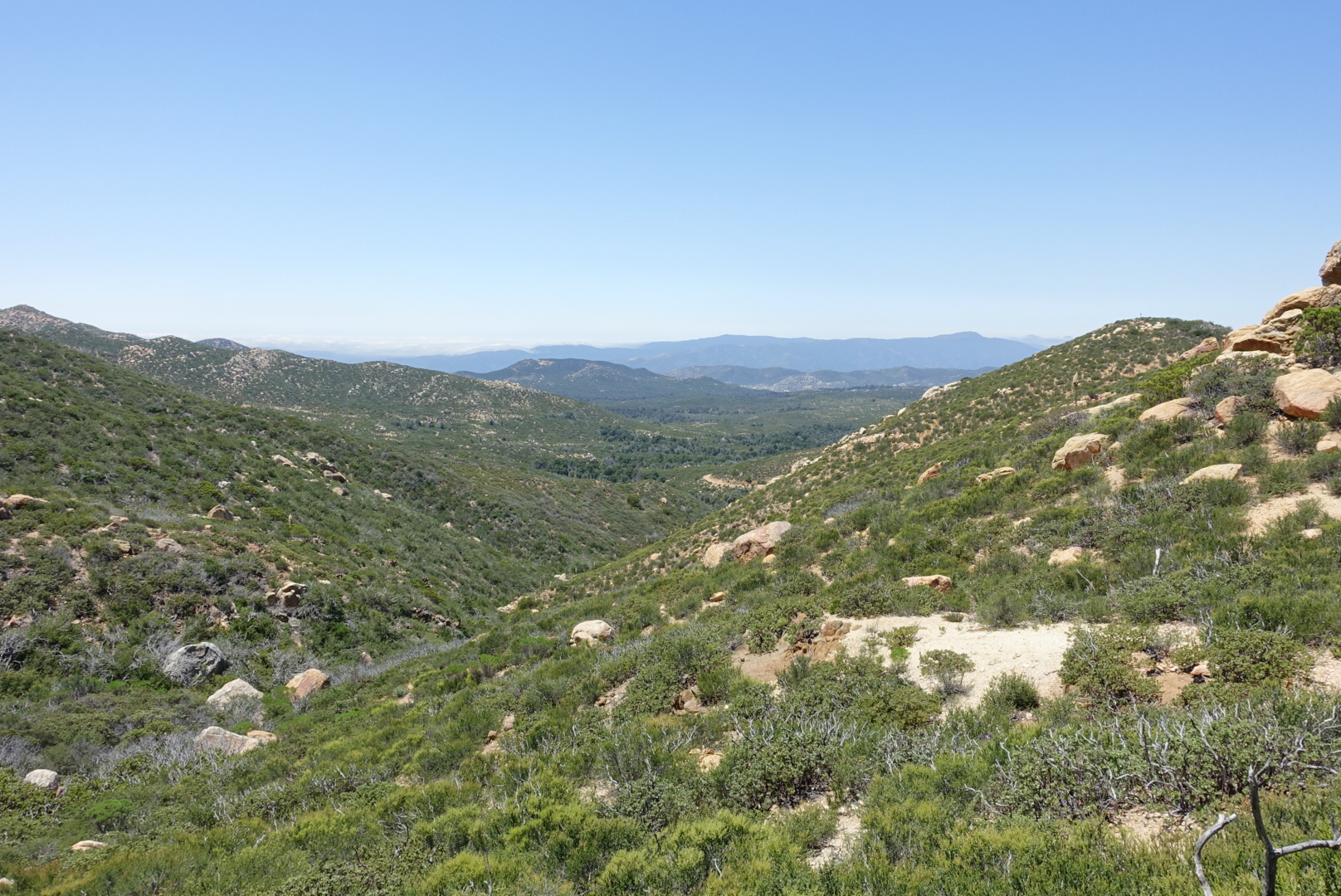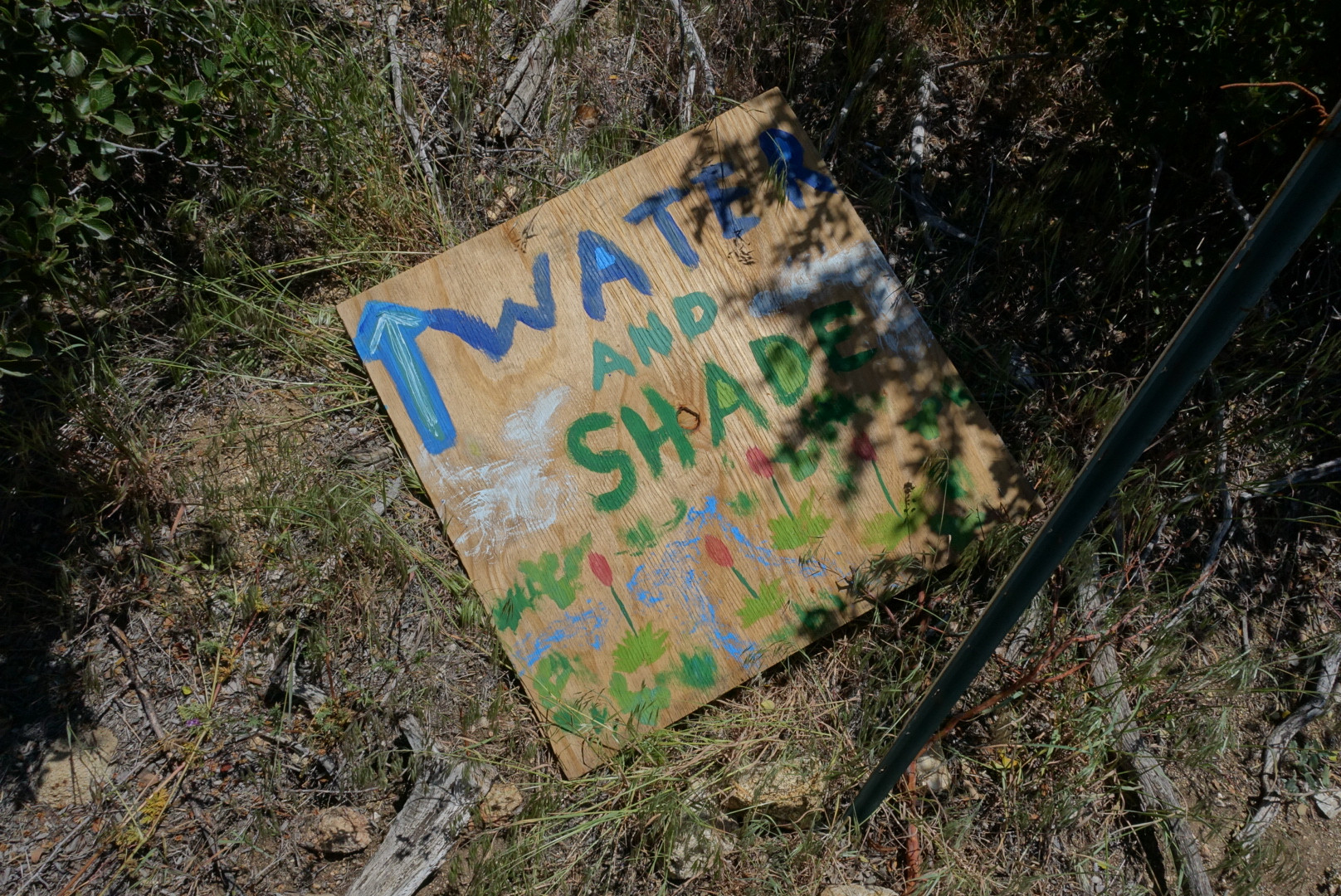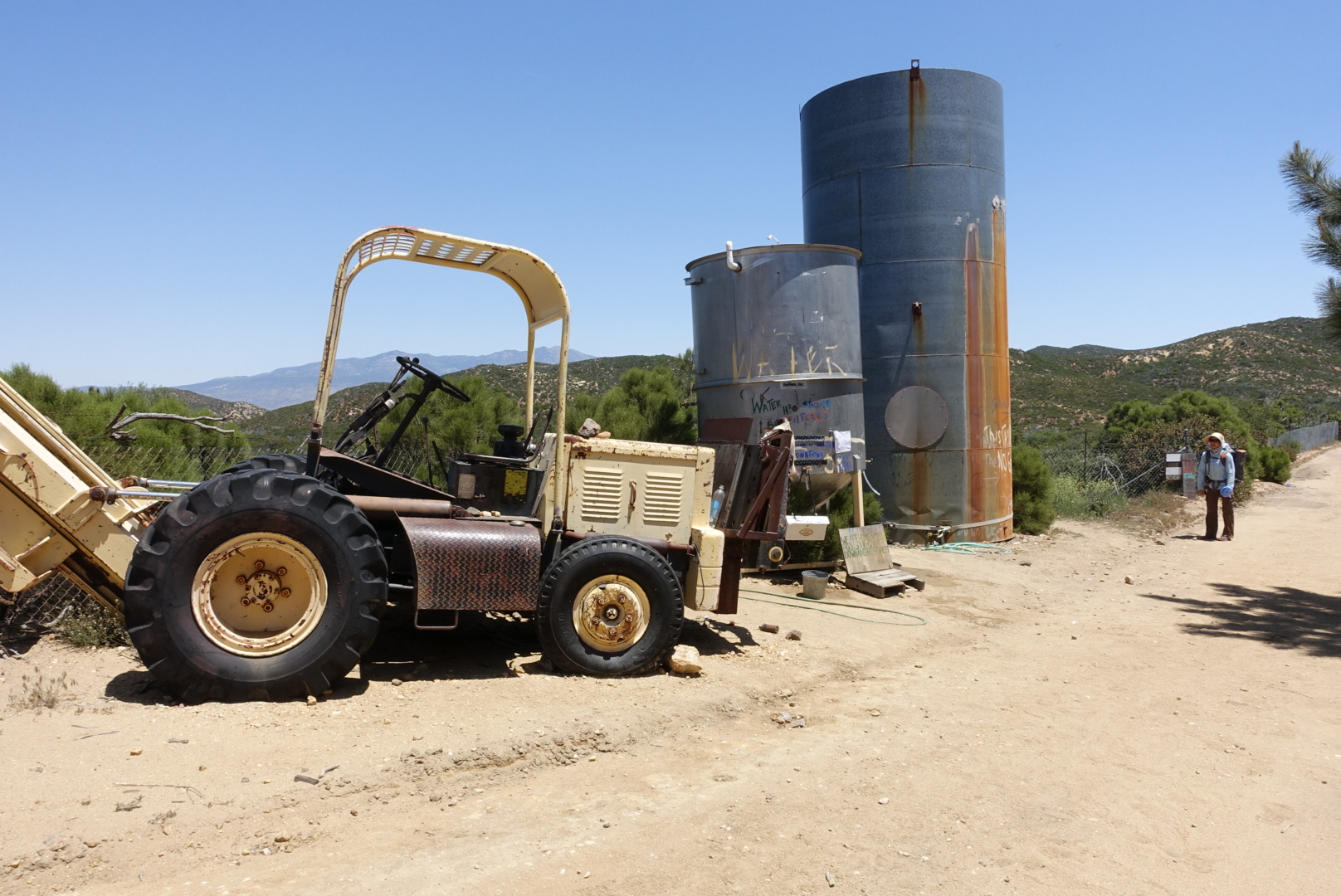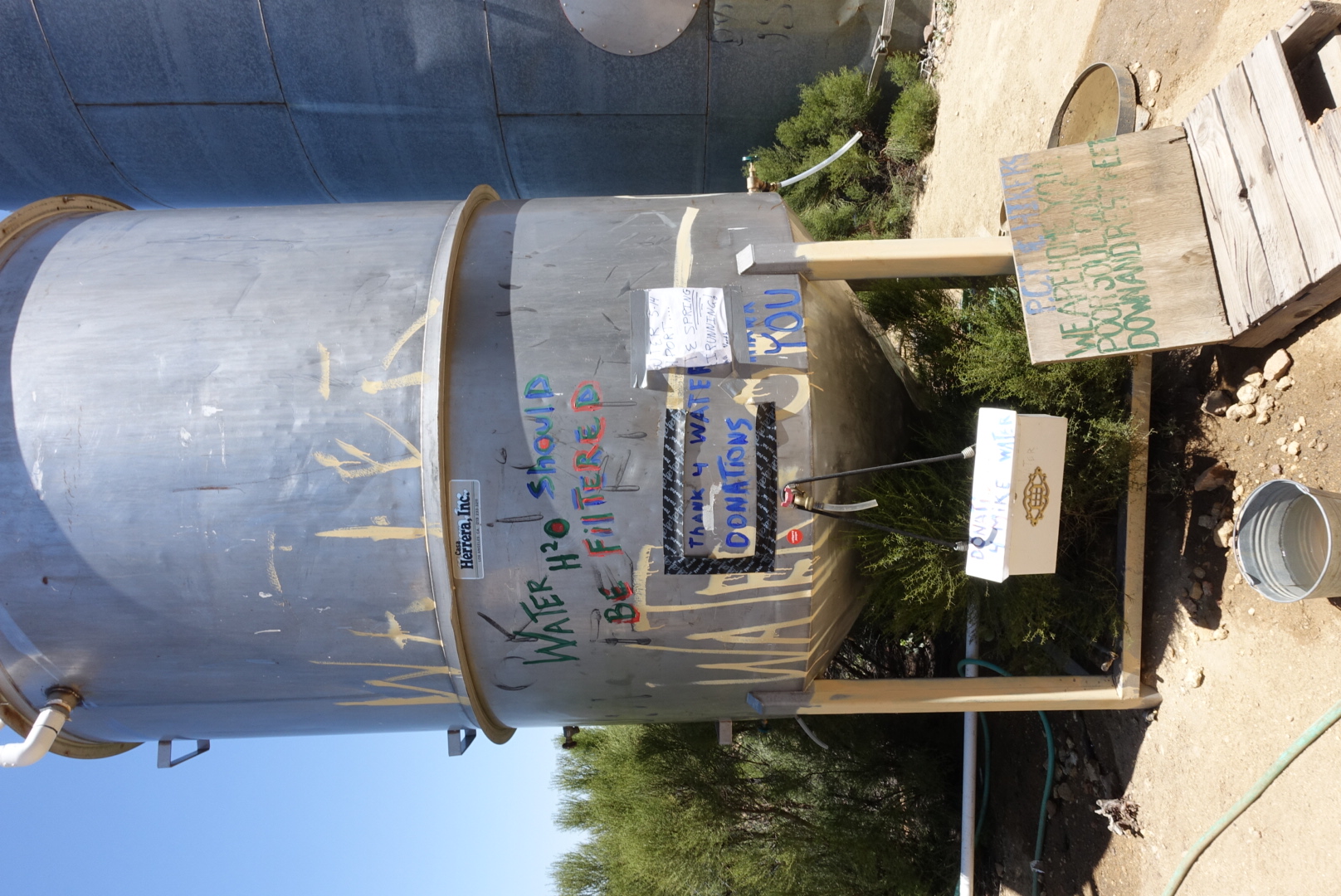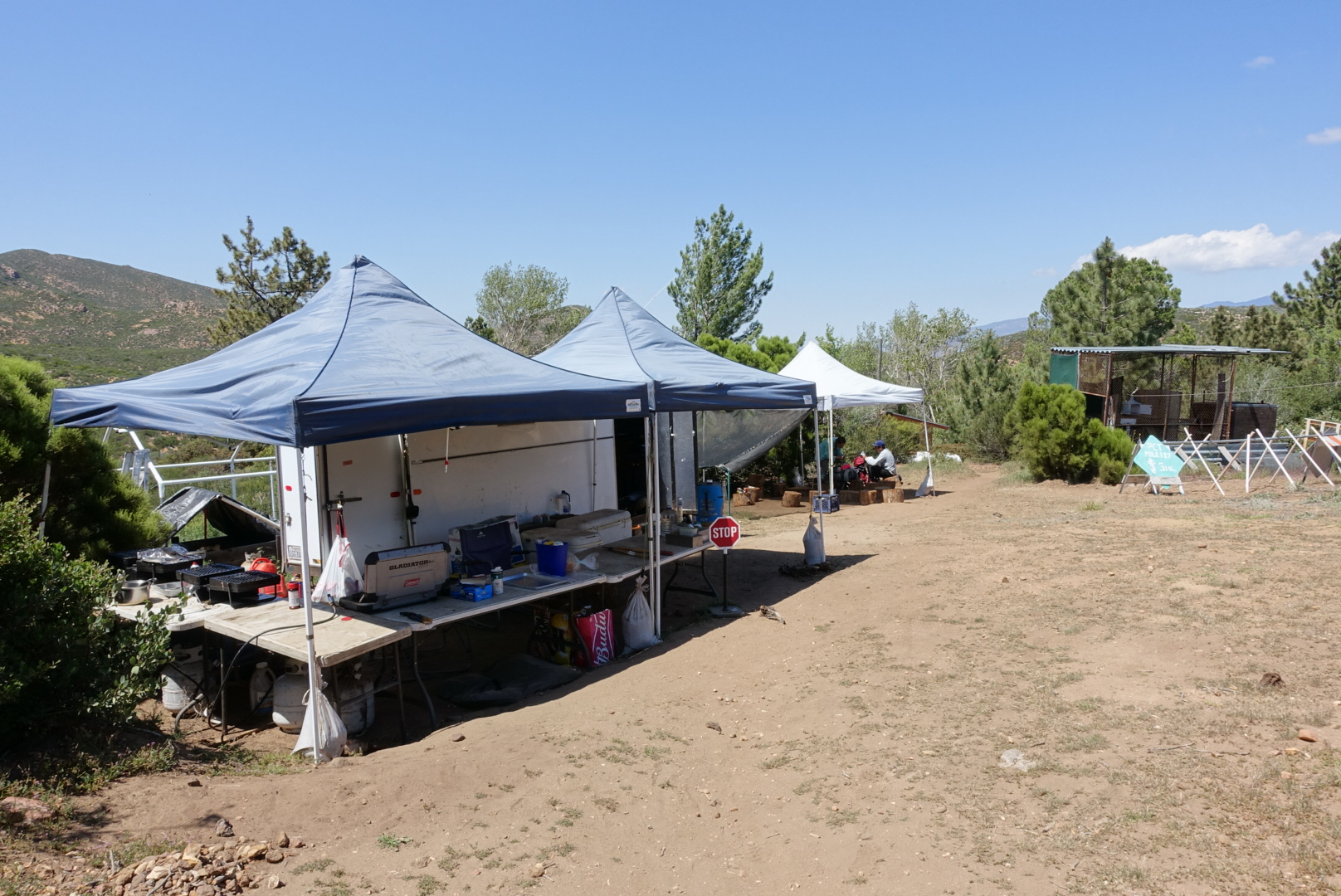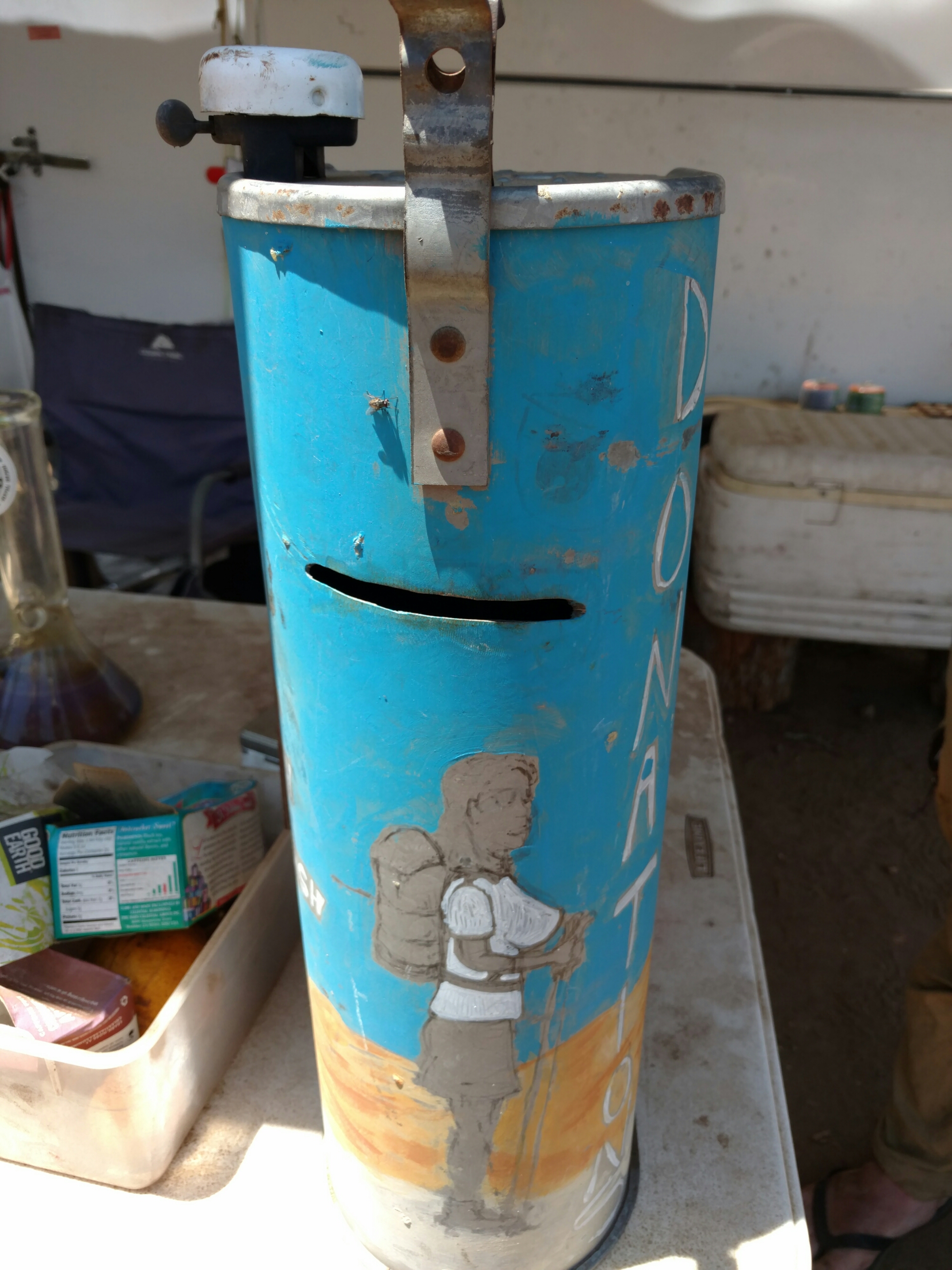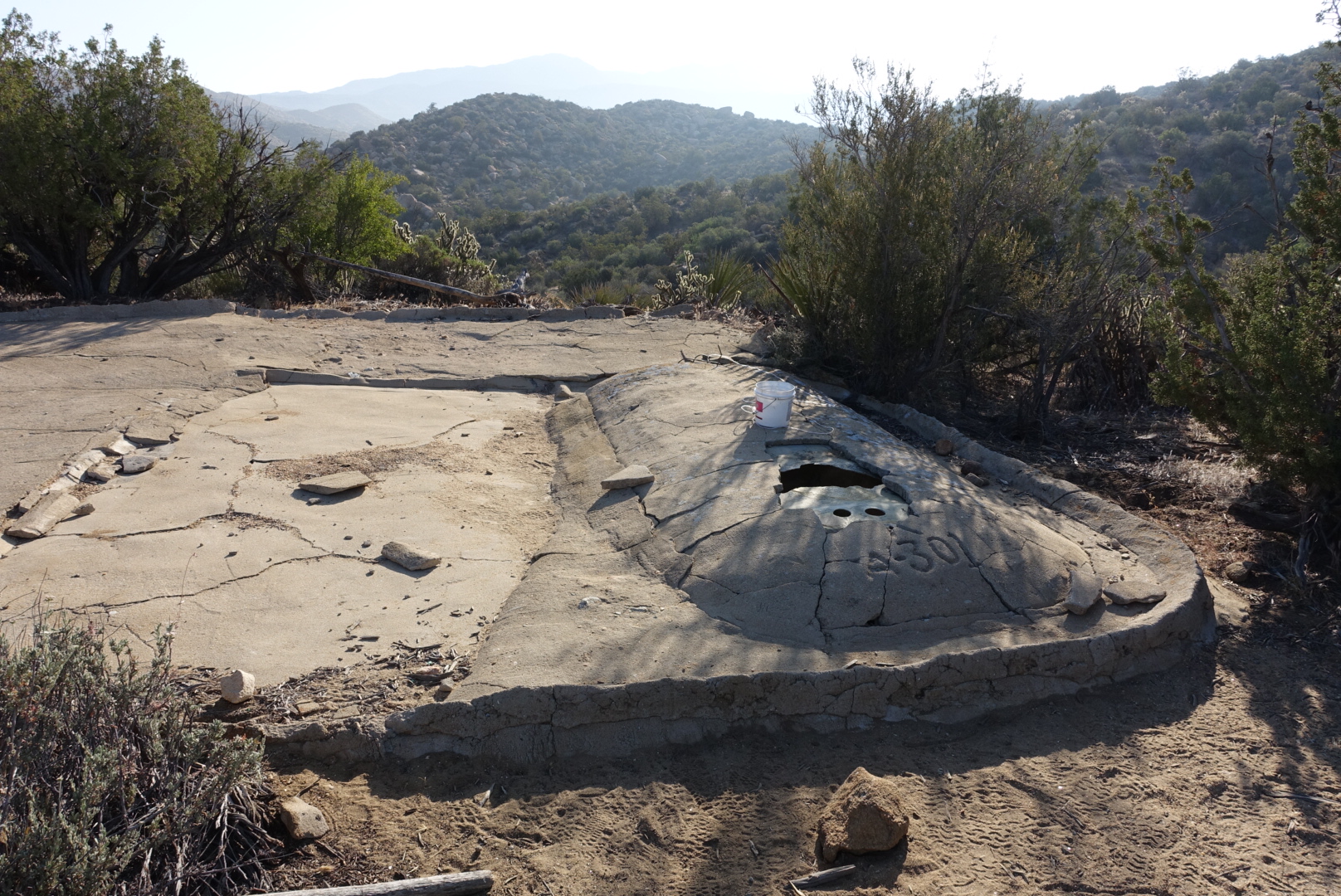Andy was gone without a trace by the time we woke up. She was planning a long, slow hike to the Paradise Valley Cafe, where she could get a ride into Idyllwild, to address her foot problems, so she needed an early start.
One thing about the PCT is that it’s so well-traveled, you can get help by just stopping. Other people will pass by before too long. So, she’ll certainly make it to the Cafe, the only question is how slowly and with how much pain.
As for us, we packed up and started hiking. It was a long way to the Cafe, and it was through a hot, dry, section of relatively monotonous desert. The only features in the area (aside from the endless creosote bushes and cacti) were occasional greenhouses and windowless buildings, placed at apparently random points in the landscape, attached to large water tanks.
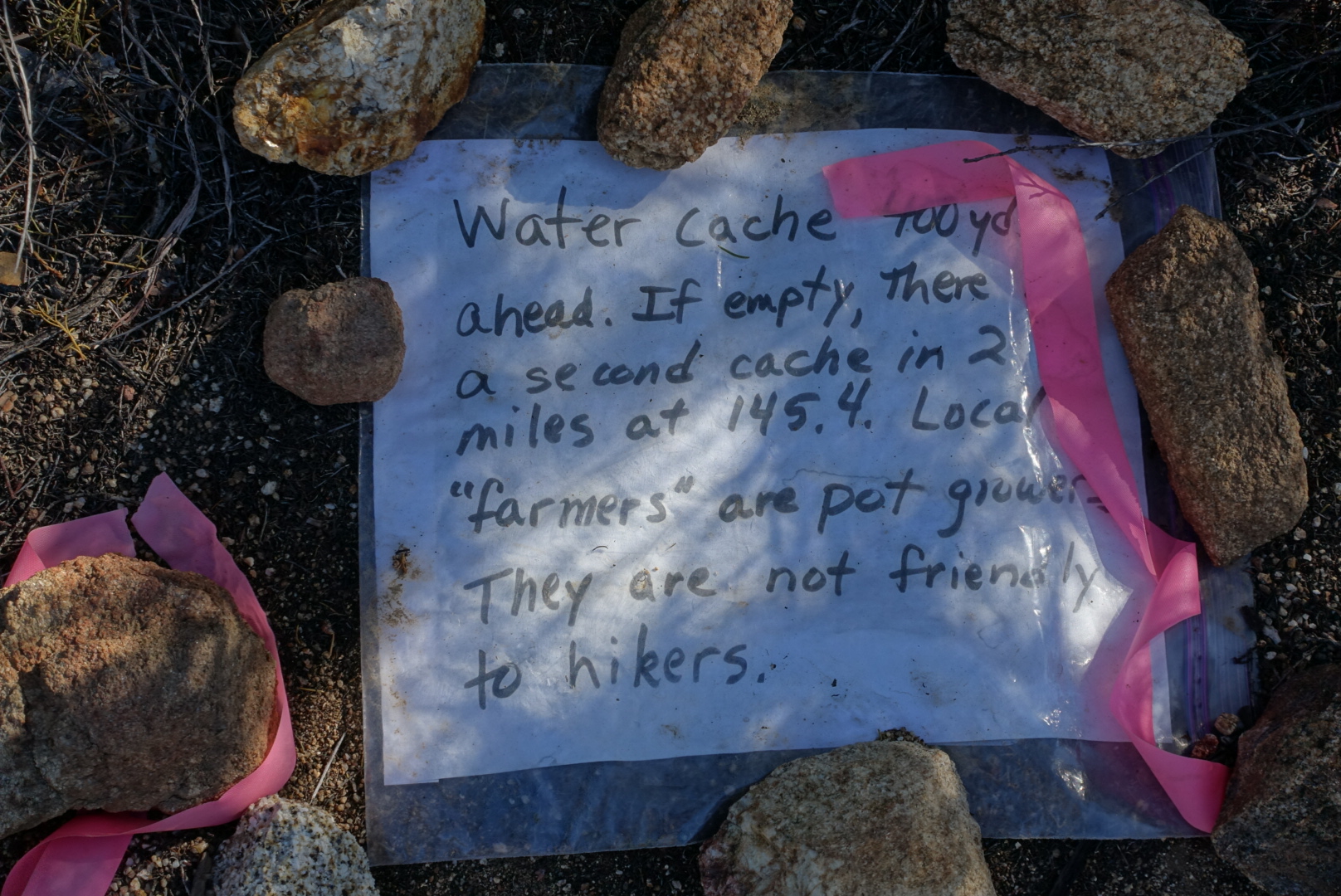
The water report said there was no water on this section of the trail, so we were carrying enough to get to the Cafe, but we took a look at the water caches anyway.
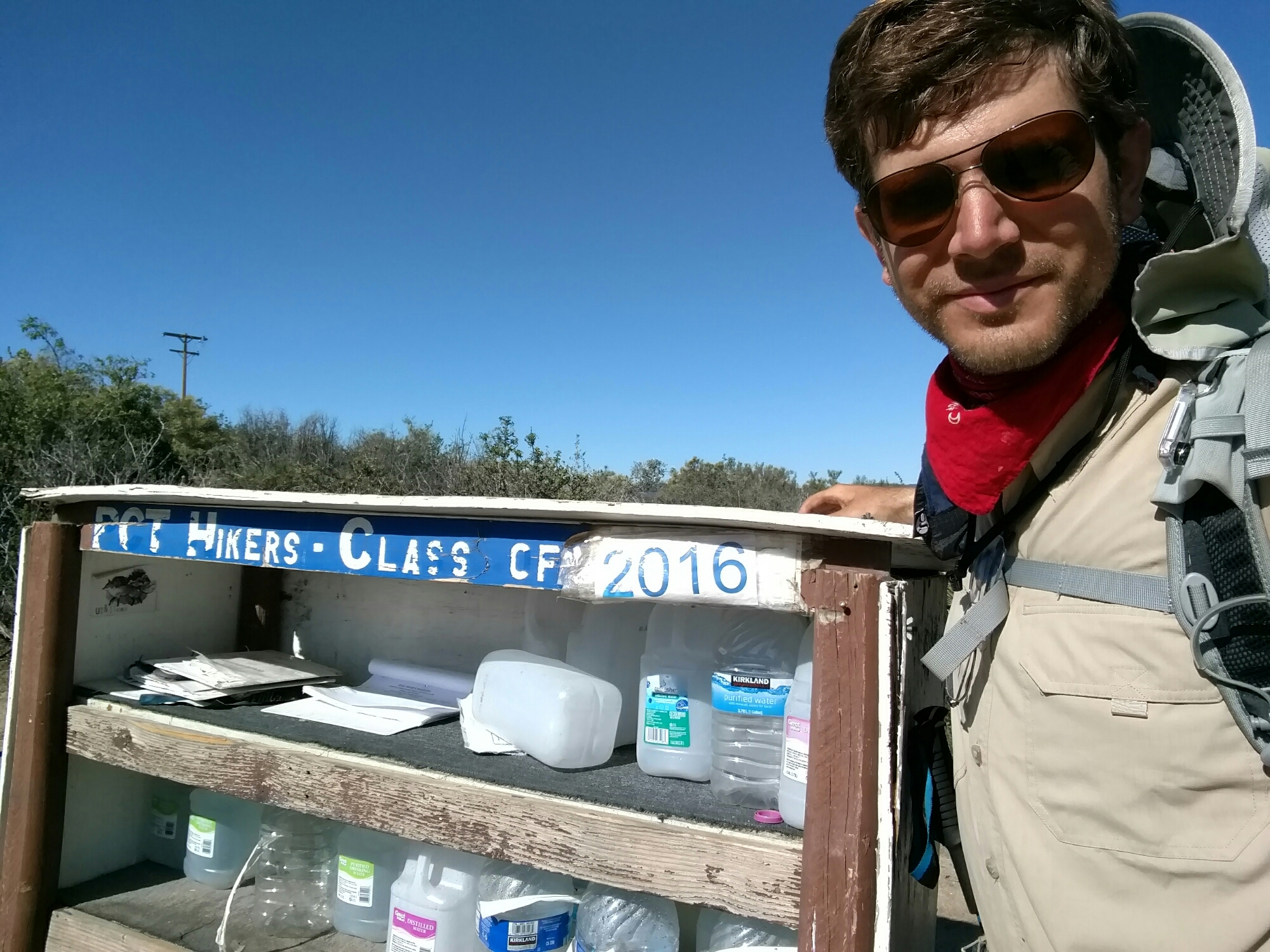
When we saw a sign calling a water cache “Malibu East”, we decided to take a look despite our ample water supply.
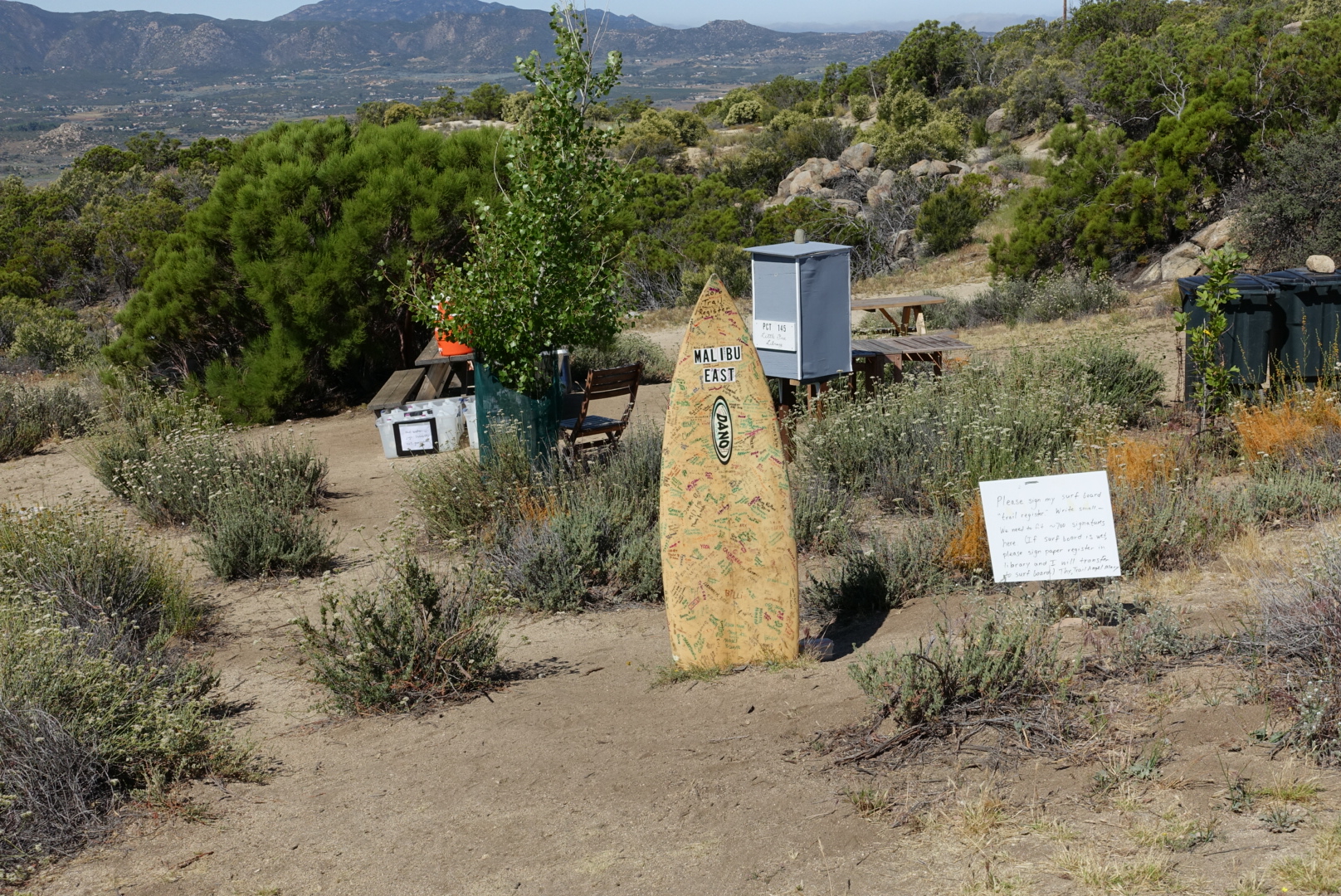
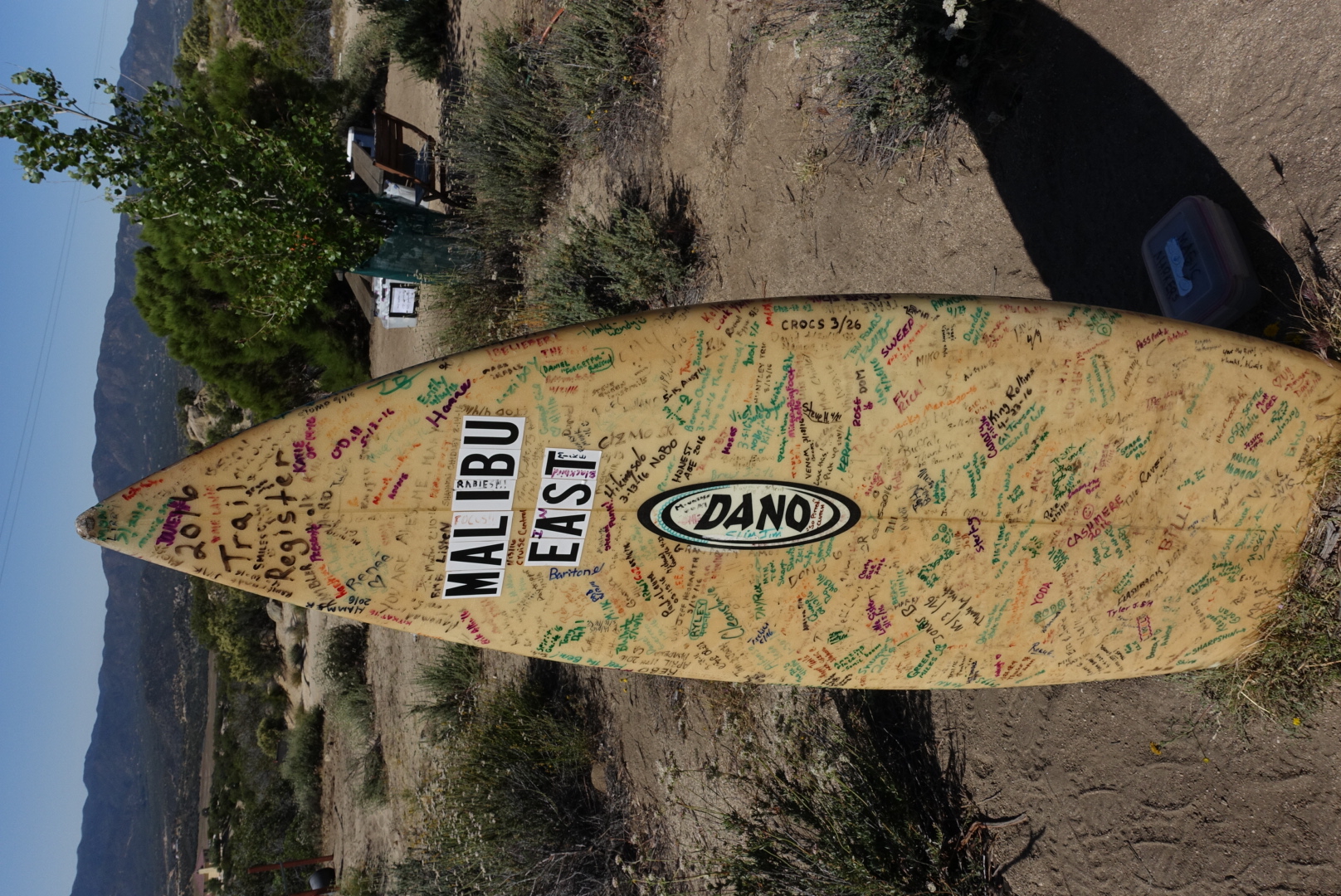
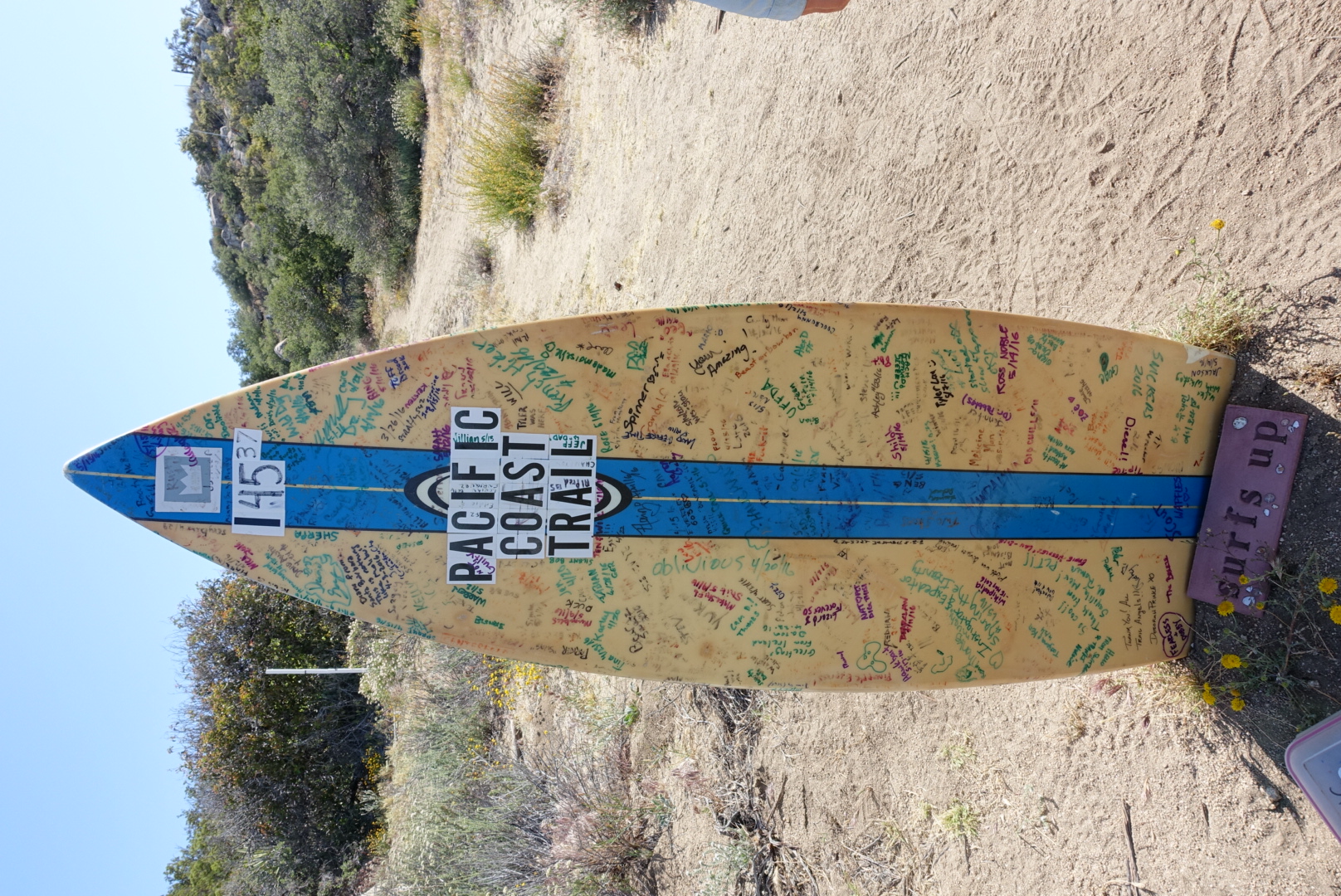
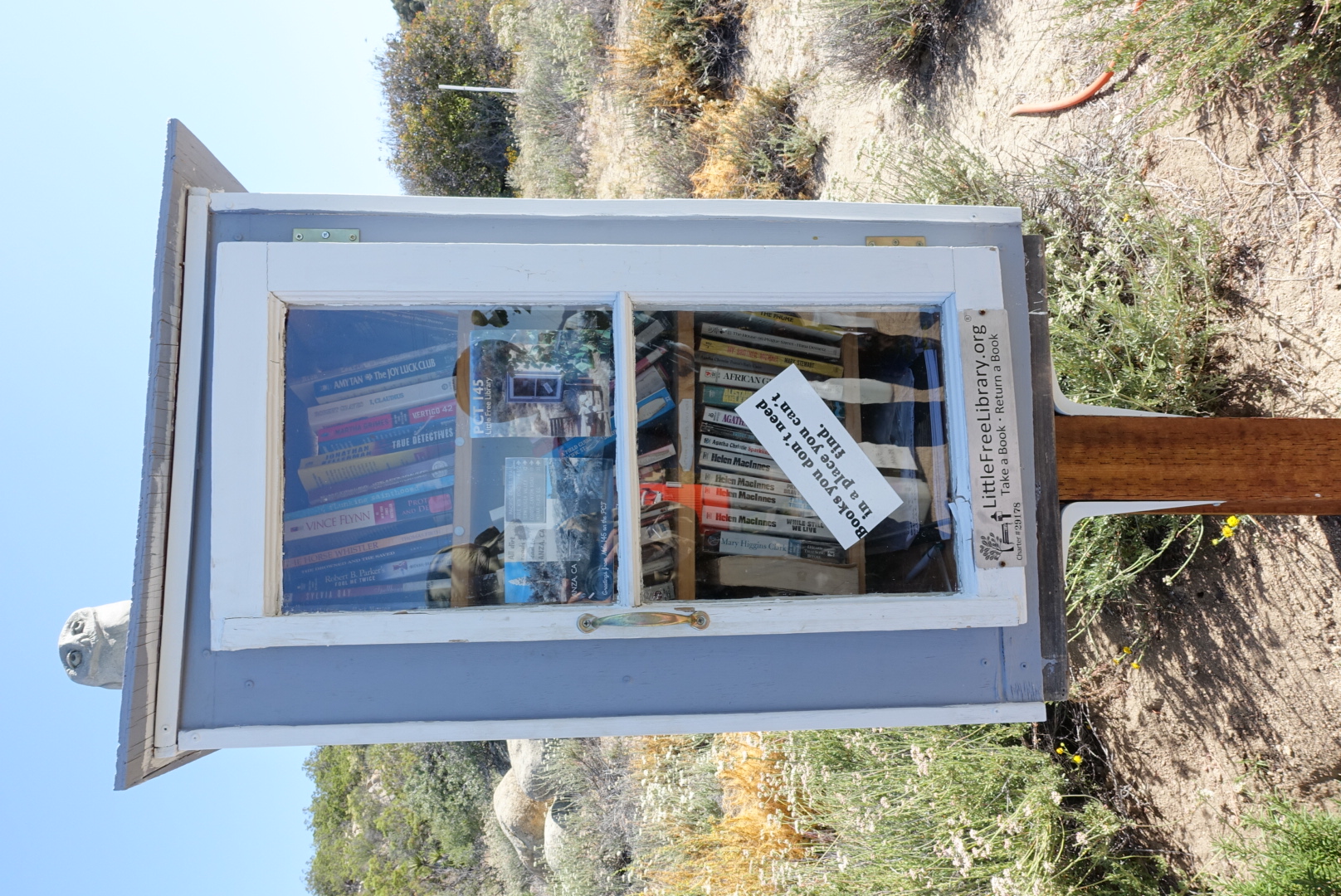


Not only was there a water cache, there was an irrigated tree providing shade, a picnic table, a hiker box, a cooler of soda, a cabinet of books on a post, and a surfboard acting as a trail register. Neat!
After a brief rest, we pushed on into the endless creosote and dust.
After a couple hours, we turned a corner and came face-to-face with none other than Andy, sitting down and smiling. “I’ve got new blisters” she said, grinning. She seemed to be toughing it out just fine. Elysse, from our campfire at Agua Caliente Creek, was resting alongside her.
After a few more miles of creosote, the trail descended into a grassy valley, and then finally to the highway to the Paradise Valley Cafe. We only had one mile of road walking between us and lunch.
We saw some other hikers hitch a ride for this last mile. They took a few minutes to load into the car, then took a 2-minute ride to the Cafe. They got there way before us.
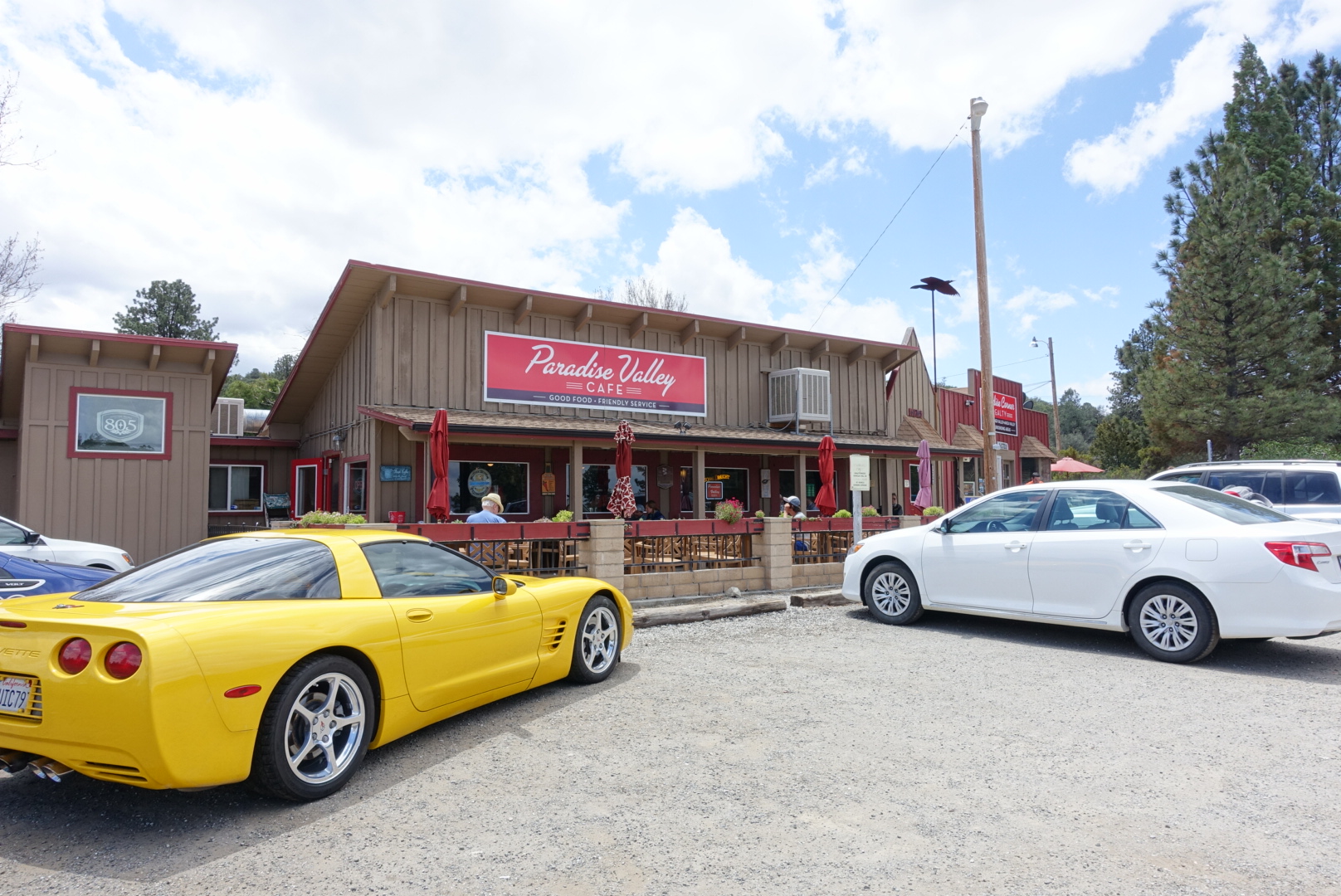
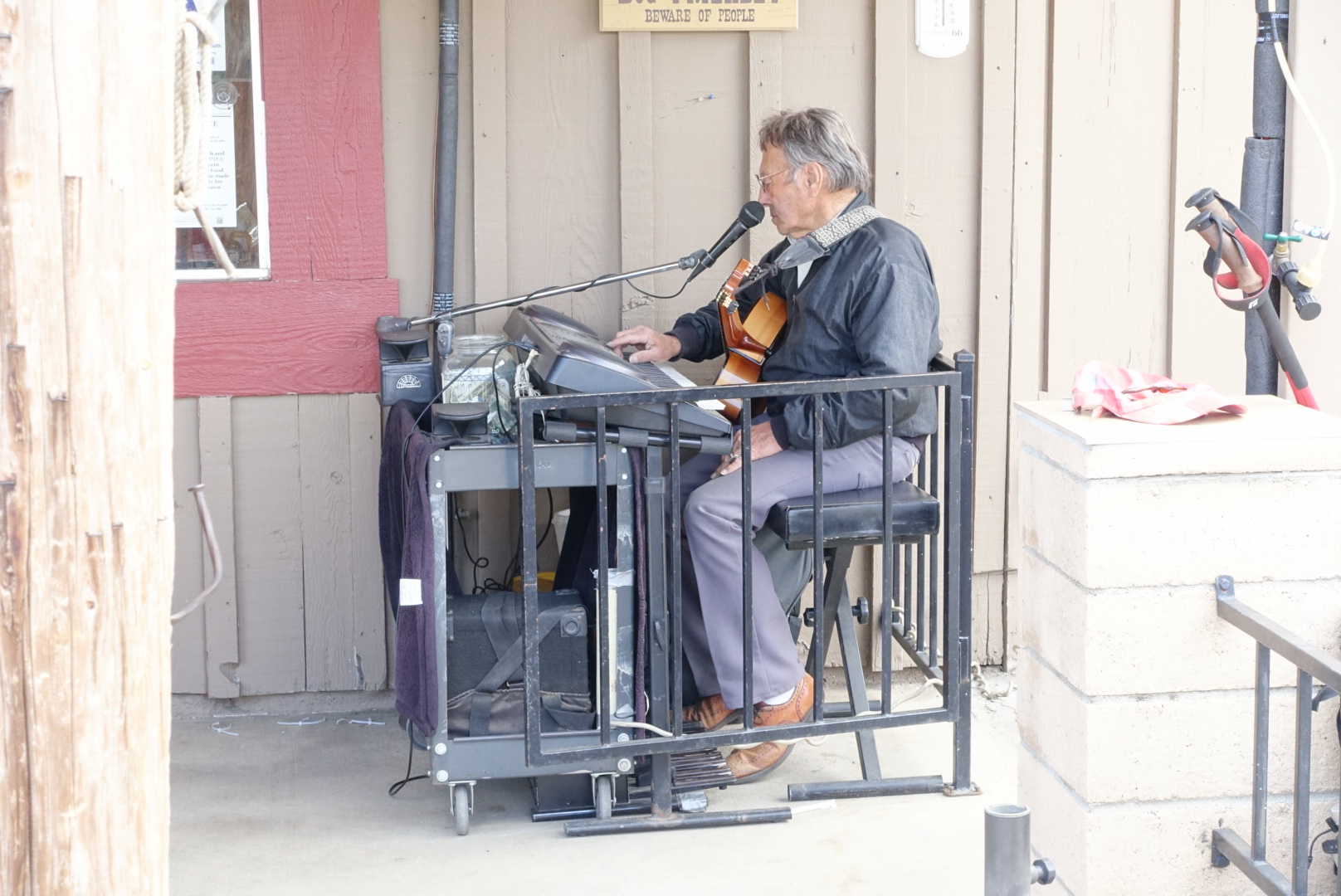
The cafe patio was filled with hikers, both familiar and unfamiliar. We chatted, and had a nice lunch. They were out of ice cream, so no milkshakes for me, but their Paradise Valley Blonde Ale was delicious.
After the meal, we discussed the upcoming fire closures with Garret and Brianna. Most people were hitchhiking around them, but the four of us wanted to walk, so as to have walked all the way from Mexico to Canada, (albeit not entirely on the PCT). The upcoming Mountain Fire Closure had a well-established alternate, but we would probably all travel together through the less-established Lake Fire alternate.
As we packed up to leave, 5 minutes before closing time, who should walk in but Andy and Elysse. They sat down and ordered, triumphant.
After a mile of road walking back to the PCT, we started our ascent into the San Jacinto mountain range, towards the first fire closure boundary. The trail was rocky and step, like the Sierras, and very unlike the rolling hills of creosote that we’d just passed through. Bright wildflowers of many colors lined the trail, and long views down to a desolate desert emerged on our right as we ascended.
Gradually, a new problem began to occur: rain. First a few drops, then more and more. Then thunder, then hail. We put on our raingear, and continued on. We sheltered under a manzanita for the worst few minutes of hail, but the inclement weather ended soon, and soon after we were dry.

We found a sheltered campsite near the summit, and set up camp, hurrying into bed to get out of the mountain cold.
